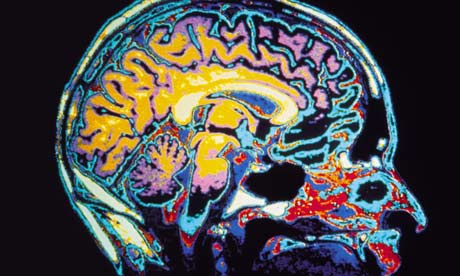
In the study of anatomy, the brain represents what outer space did to Captain Kirk of Star Trek’s USS Enterprise: the final frontier. We are learning more all the time, and yet the brain remains an area of great mystery.
We do know some things, of course, and paramedics and health professionals are not the only ones who benefit from recognizing the types and severity of brain damage. The more each of us knows, beginning with the basics, the better for our afflicted family members, friends and neighbors.
Brain injuries are very difficult to make without the proper, mostly quite modern equipment. However, there are symptoms one can learn to recognize, and assessments one can learn to make, when confronted with a person acting erratic or confused. It will not always be attributable to brain damage, but unless you have a modicum of knowledge about the brain you will have no way of ruling it out. A brief course in brain anatomy, then, is indicated.
The “rough map” of the brain
Let’s discuss six general “geographic areas” of the brain, one at a time, and describe the effect of damages done there. The frontal lobe, behind the forehead, is an area devoted to both movement and problem-solving, so injuries to that area manifest as a range of problems. Mild damage may result in some loss of simple body movement, whereas serious damage can result in paralysis.
In addition, you will know this type of injury because of the afflicted person’s inability to plan a sequence of complex movements required to finish multi-stepped tasks, such as making coffee. This is called “sequencing,” and as it becomes more severe, it can result in loss of flexibility in thinking generally. Finally, mood changes, social awkwardness and the inability to use language skills (Broca’s aphasia) can range from light and sporadic to heavy and persistent, the latter being the more severe case, naturally.
Damage to the parietal lobe, near the back and top of the head, is indicated by the inability to name objects (anomia), difficulty drawing objects and difficulty with mathematics (dyscalculia). As it also aids in movement and awareness of space/time, the parietal lobe, when damaged, also reduces one’s awareness of certain body parts and/or surrounding space and causes problems with eye and hand coordination.
Visual problems have many causes
Defects in vision and difficulty with color identification (color agnosia) may indicate damage to the occipital lobes, located at the back of the head. You will recognize more severe damage by the presence and relative strength of visual hallucinations. Reading and writing become labored, too.
At the side of the head above the ears reside the temporal lobes. These are essential to face recognition, understanding speech and memory functions, so these activities will be affected by temporal lobe damage. Severity is difficult to gauge, but particularly heavy damage can lead to increase aggressiveness and some loss of self-control.
Deep within the brain is the brain stem, which has roles in balance, movement, spatial orientation, sleep and breathing. Damage manifests, therefore, in problems with swallowing, nausea, insomnia and dizziness (vertigo). Sleep apnea and an increasing inability to perceive the environment are indicators of more serious damage.
General coordination and speech
The cerebellum, at the base of the skull, is essential to coordination, three-dimensional perception, speech, detailed activity and rapid movement. Therefore, injuries to this area of the brain will affect the proper functioning in these areas. Fine, precise movements requiring concentrated coordination become increasingly difficult, and in severe injuries the ability to walk can be reduced or eliminated.
Slurred speech, dizziness and the inability to make rapid, repetitive movements are also markers of cerebellum damage. In addition, the body may be subject to twitches, or “tremors,” another clue that part of the observed behavior may be due to cerebellum damage.
A TV commercial for college used to remind people that, “A mind is a terrible thing to waste.” This is so true, and people should give more thought to the organ in their body that, in point of fact, enables them to have thoughts in the first place. Our brains are not maintenance-free, by any means, as they require adequate nutrition and, yes, exercise.
The more we know about how our bodies work, the better. Should we notice someone displaying one or more of the foregoing symptoms, we are now able to suggest a possible cause and recommend appropriate treatment. More than that, however, we should strive to care for ourselves – in body, mind, soul and spirit – so that we can be the best person possible, as well as a well-informed one.
Article Source: http://www.1888articles.com
Healty Articles
Sharing Health Information
Sharing Health Information
Search
Categories
About Vitamin
Acne
Anti Aging
Asthma
Autism
back pain
Cancer
Dental
Depression
Diabetes
Diet
Drug Abuse
Eye Health
Free ebooks health
Hair Loss
Hair Treatment
Health and Fitness
Healthy Food
Heart Disease
HIV/AIDS
Hypertension
Nutrition
Obesity
Self Hypnosis
Skin Care
Sleep Snoring
Vegetarian
Vitamin A
Vitamin A - K
Vitamin B
Vitamin C
Vitamin D
Vitamin E
Vitamin for skin
Vitamin K
weight loss
Recent Post
Followers
Copyright 2009 | Dicky Haerudin and Asep Yudi Yurdani | Healty Articles
MobiPress Template designed by the Jinsona Design and XML coded by CahayaBiru.com


0 comments